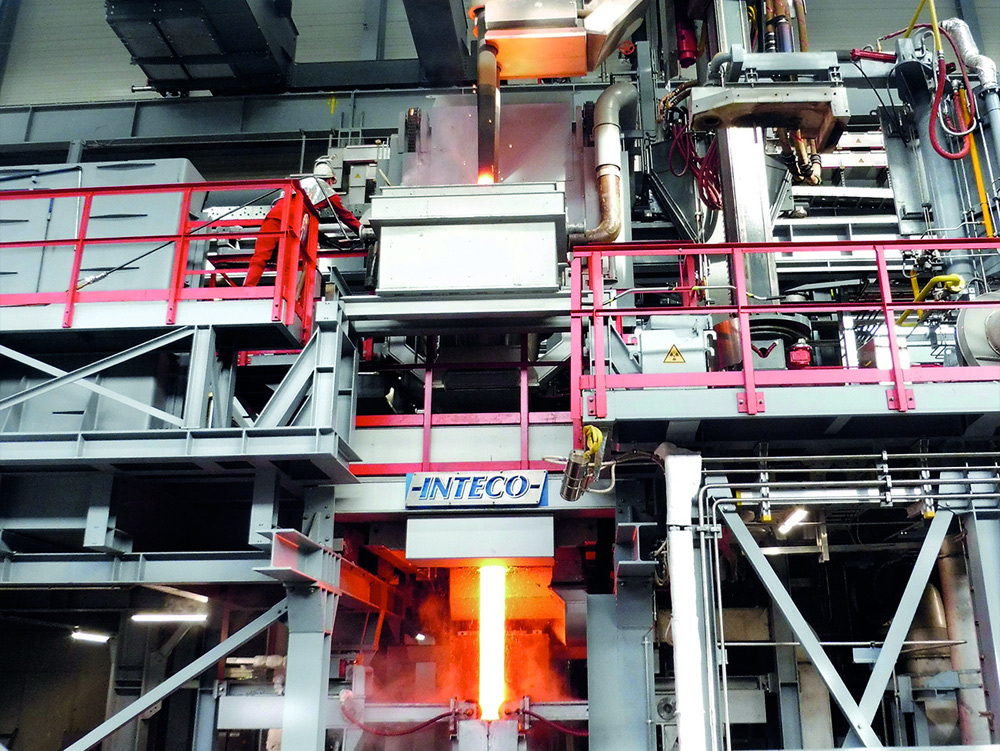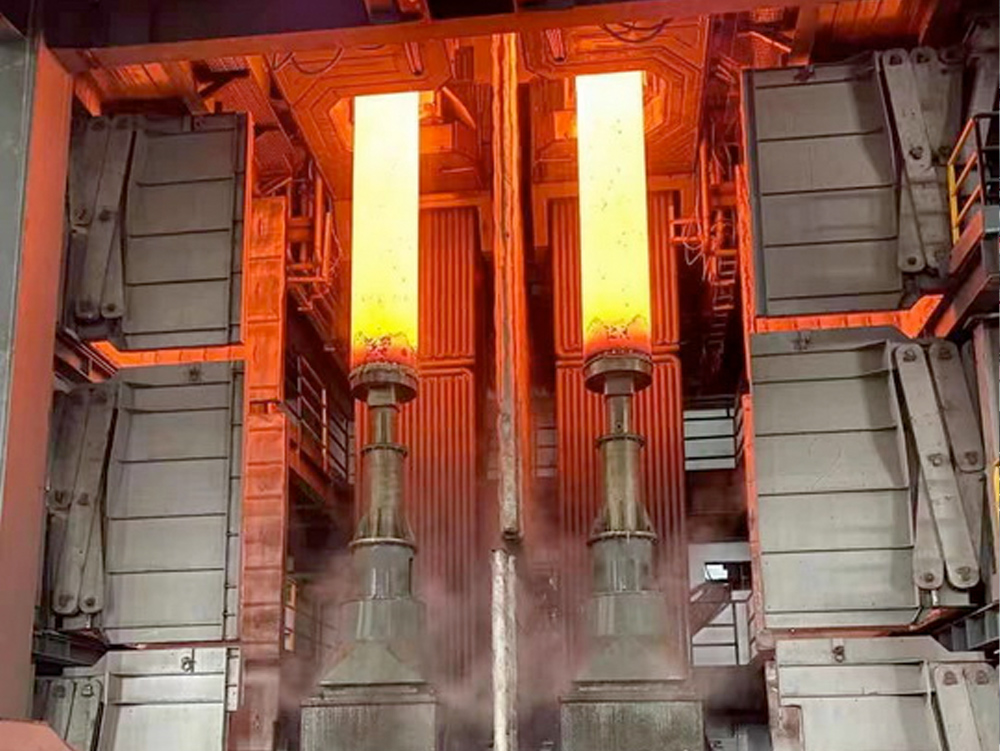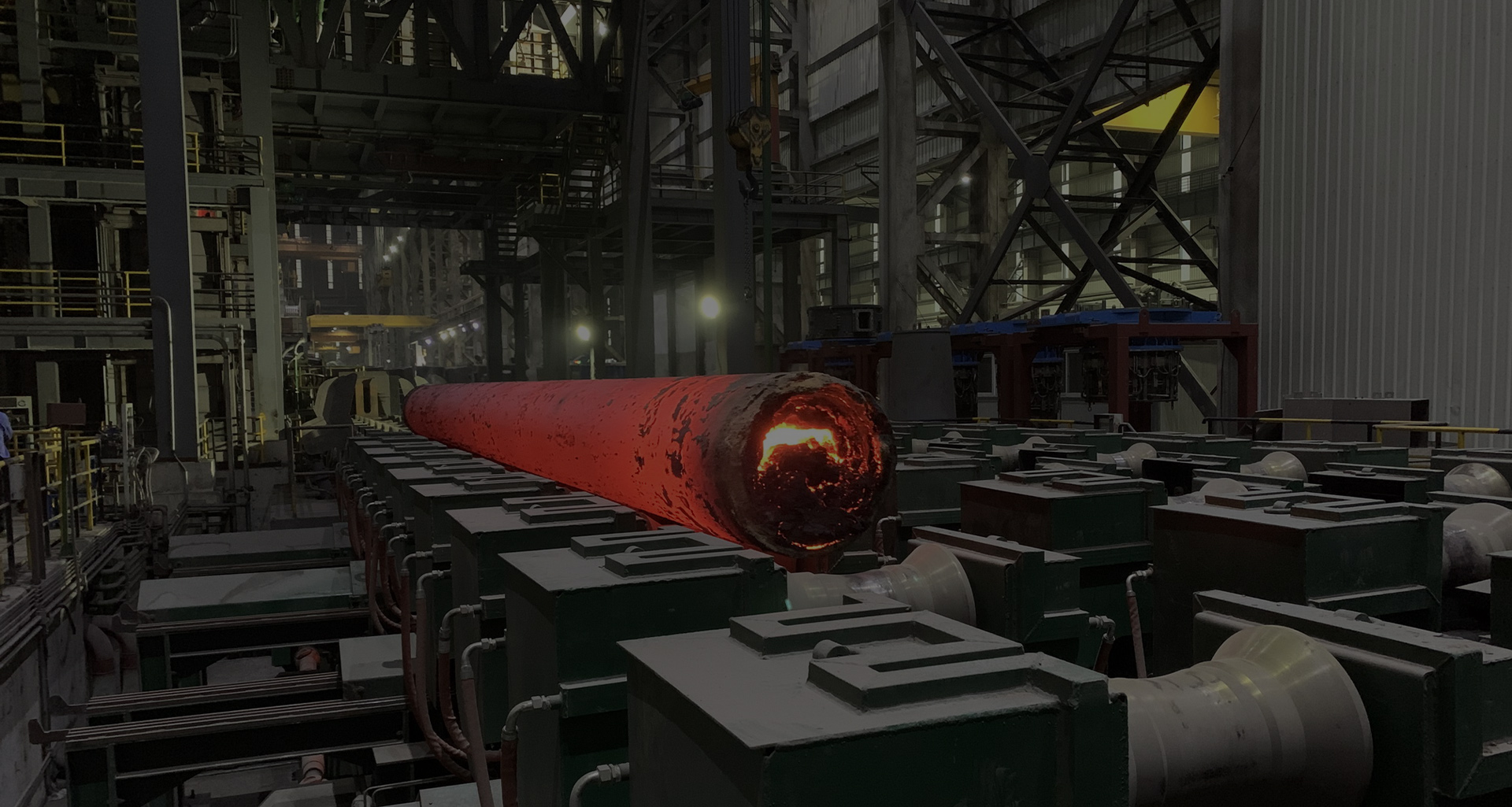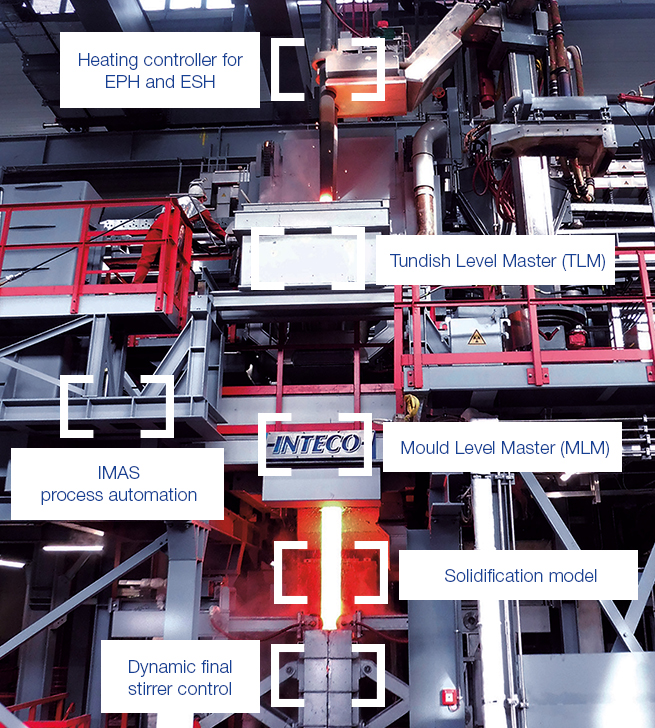SEGMENT CASTING
- General Information
- Variations & Features
- Digitalization
Segment Casting is a semi-continuous, vertical casting process that marks the beginning of a new era in the production of large ingots for a wide range of applications, such as machine and energy technology. It enables production of ingots with large dimensions for subsequent forging processes.
Although the production of heavy forging ingots produced by ingot casting has been an established process for decades, this method has certain weaknesses and limitations such as ingot segregation, poor yield, and limited ingot length.
Based on our experience in various casting processes, we have developed a completely new process concept that can be described as a combination of ingot casting, continuous casting, and the ESR process. In the so-called segment casting process, large-format ingots up to 1,500mm diameter are produced directly from liquid steel in a semi-continuous process. This new casting process—the segment casting process—is brought to industrial production maturity by INTECO’s engineers.
Variations:
- Sections: round, polygonal, rectangular, hollow
- Sizes up to Ø1500 or comparable for other geometries
- Length up to 13–15m with cutting to final product size
- No limitations to steel grades
Process variations:
- Semi-continuous (SC) to ingots from 1 to 4 strands in parallel and subsequent offline cutting
- Continuous (VCC) in sequences of multiple ladles with inline cutting and subsequent ingot manipulation
Features
- Inductive feeder for maximum hot top yield
- Dynamic electromagnetic stirring system (EMS)
- Retractable heat insulation system
- EPH system for ladle heating at ultra-low casting speeds
- Liquid steel protection from ladle to mould
- Servo drive oscillation
- Fully automatic dummy bar system
- Fully automatic discharge system
Digitalization and smart production are transforming the steel industry, driving development and change. At INTECO, we offer not only first-class engineering in plant construction, but also customized digital solutions tailored to our customers’ demands. Enhance your production with our digital solutions and utilize the collected data to make strategic adjustments and drive continuous progress.
The INTECO heating controller for EPH and ESH is a sophisticated solution for tundish heating. The basic design offers a cascaded control function for temperature control based on a fixed value or a temperature profile. It features automatic slag melting, immersion depth control and detection of stirring problems. Optionally, a temperature and prediction model can be applied using tundish condition and history as well as data of successful heat levels for predicting and controlling the temperature and making the system independent from a temperature signal.
The Tundish Level Master is used for automatic level control of the filling level in the tundish at a defined set point by monitoring the tundish gross weight (through the related weighing system) and controlling the ladle slide gate.
A stable mould level is essential for casting high-quality steel grades. The INTECO Mould Level Master is an advanced control system which uses a patented detection system to ensure exact mould level control throughout the entire continuous casting process, regardless of the conditions, variations and disturbances. It reduces the risk of overflow, which results in better casting stability and a safe and reliable operation. The included flushing function removes clogging (alumina build-up). The system is sensor-independent and can be connected to various measuring systems such as radiometric, ultra-sonic, or eddy-current systems.
Our micro-segregation model defines thermo-physical properties of steel according to the chemical composition such as liquidus/solidus temperature, density and thermal conductivity. The solidification model calculates the temperature profiles along the entire solidifying strand, taking the thermal boundary conditions and relevant process variables like casting speed and water flow into consideration. The model provides real-time data on surface temperature, internal gradients and shell thickness as a function of solid fraction.
INTECO’s advanced online solidification model allows precise adjustment of the dynamic final stirrer’s position during the casting process and provides real-time data. It defines thermo-physical properties of steel according to the chemical composition and calculates temperature profiles along the entire solidifying strand. This allows to change input parameters such as casting speed, water flow, tundish heat, steel grade composition and many more. As a result, it ensures highest final product quality, guaranteeing high level of soundness, low segregation and defect-free center structure.
IMAS-PA-SC provides advanced top-down process guidance through dynamic or static treatment planning and integrated optimization tools. Process supervision is massively improved by the cockpit view and integrated real-time process models. IMAS provides instant real-time information and alerts, based on which the operators can control and steer the process just-in-time. The heat-based data recording stores sensor data, including complex information such as video streams, allowing observation of real-time data for quality assurance and process improvement.
PROJECTS

voestalpine Stahl Donawitz




